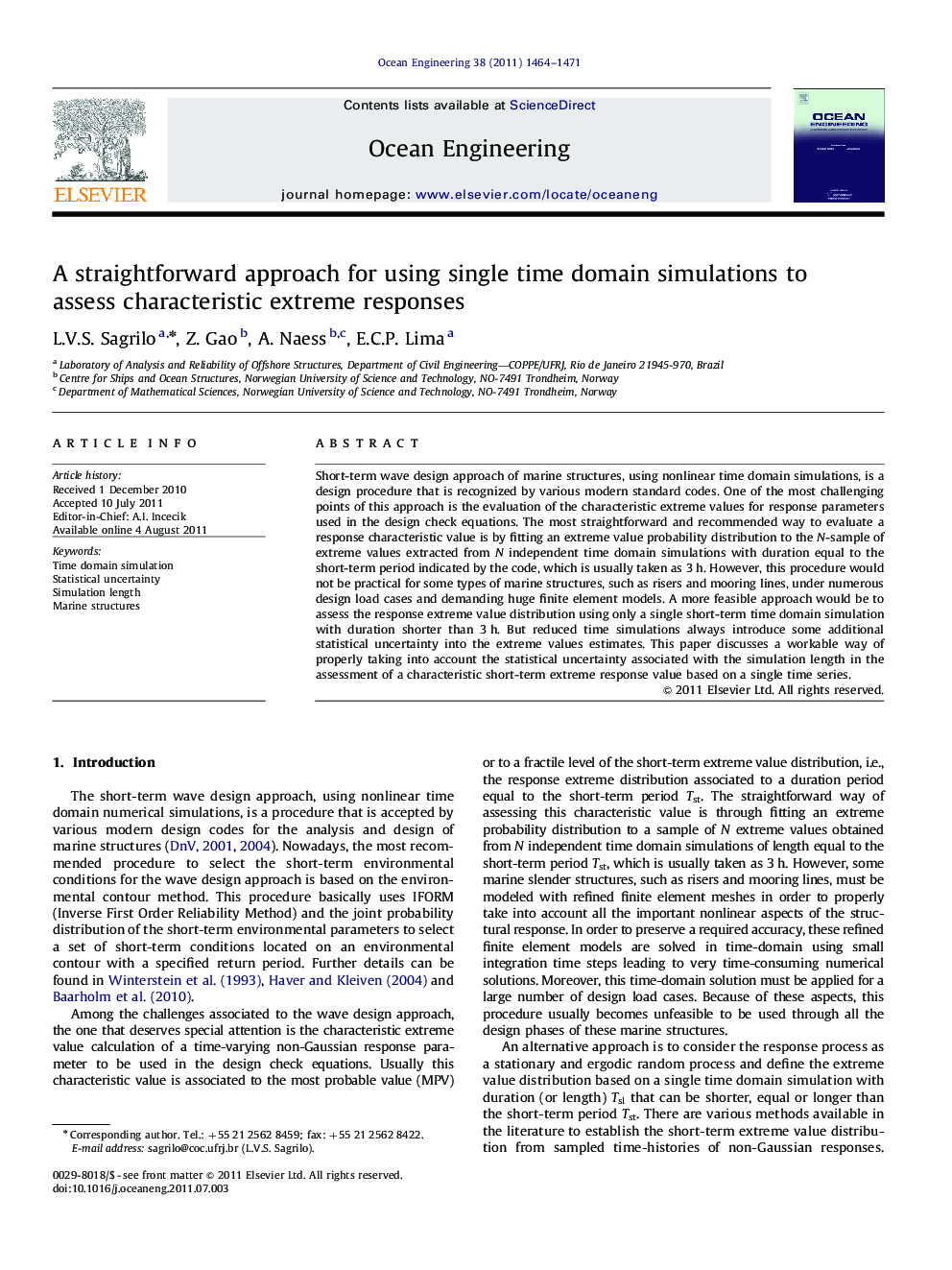| کد مقاله | کد نشریه | سال انتشار | مقاله انگلیسی | نسخه تمام متن |
|---|---|---|---|---|
| 1726579 | 1015122 | 2011 | 8 صفحه PDF | دانلود رایگان |

Short-term wave design approach of marine structures, using nonlinear time domain simulations, is a design procedure that is recognized by various modern standard codes. One of the most challenging points of this approach is the evaluation of the characteristic extreme values for response parameters used in the design check equations. The most straightforward and recommended way to evaluate a response characteristic value is by fitting an extreme value probability distribution to the N-sample of extreme values extracted from N independent time domain simulations with duration equal to the short-term period indicated by the code, which is usually taken as 3 h. However, this procedure would not be practical for some types of marine structures, such as risers and mooring lines, under numerous design load cases and demanding huge finite element models. A more feasible approach would be to assess the response extreme value distribution using only a single short-term time domain simulation with duration shorter than 3 h. But reduced time simulations always introduce some additional statistical uncertainty into the extreme values estimates. This paper discusses a workable way of properly taking into account the statistical uncertainty associated with the simulation length in the assessment of a characteristic short-term extreme response value based on a single time series.
► This paper discusses the estimation of short-term characteristic extreme responses based on a single time domain simulation for the design of some marine structures.
► An additional safety factor is proposed in order to cope with the statistical uncertainties associated to the simulation length.
► This safety factor depends basically on the simulation length itself and on a designer assumed level of risk that the target reliability level implied by the original design code is being preserved.
Journal: Ocean Engineering - Volume 38, Issue 13, September 2011, Pages 1464–1471